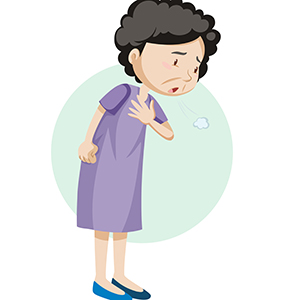Acute effect of oxygen therapy on exercise tolerance and dyspnea perception in ILD patients

Submitted: May 12, 2021
Accepted: September 6, 2021
Published: October 11, 2021
Accepted: September 6, 2021
Abstract Views: 1697
PDF: 771
Publisher's note
All claims expressed in this article are solely those of the authors and do not necessarily represent those of their affiliated organizations, or those of the publisher, the editors and the reviewers. Any product that may be evaluated in this article or claim that may be made by its manufacturer is not guaranteed or endorsed by the publisher.
All claims expressed in this article are solely those of the authors and do not necessarily represent those of their affiliated organizations, or those of the publisher, the editors and the reviewers. Any product that may be evaluated in this article or claim that may be made by its manufacturer is not guaranteed or endorsed by the publisher.
Similar Articles
- C. Robalo Cordeiro, S. Freitas, B. Rodrigues, A. Catarino, M.J. Matos, I. Ferreira, L. Carvalho, Diagnosis of Respiratory Bronchiolitis associated interstitial lung disease , Monaldi Archives for Chest Disease: Vol. 65 No. 2 (2006): Pulmonary series
- R. Roshan, M. Gupta, R. Kulshrestha, B. Menon, S.K. Chhabra, Combined Pulmonary Fibrosis and Emphysema in a welder , Monaldi Archives for Chest Disease: Vol. 77 No. 1 (2012): Pulmonary series
- Anna Stainer, Paola Faverio, Francesca Bono, Alberto Pesci, An unusual presentation of pulmonary lymphoma: When diffuse ground glass opacities can mean anything , Monaldi Archives for Chest Disease: Vol. 88 No. 1 (2018)
- Susanna Ricotti, Valentina Martinelli, Patrick Caspani, Serena Monteleone, Lucia Petrucci, Elena Dalla Toffola, Catherine Klersy, Changes in quality of life and functional capacity after lung transplantation: A single-center experience , Monaldi Archives for Chest Disease: Vol. 87 No. 3 (2017)
- Ali Asghar Hemmati, Soheila Alboghobeish, Akram Ahangarpour, Chronic exposure to high fat diet exacerbates arsenic-induced lung damages in male mice: Possible role for oxidative stress , Monaldi Archives for Chest Disease: Vol. 88 No. 1 (2018)
- P. Santus, F. Casanova, M.L. Biondi, F. Blasi, F. Di Marco, S. Centanni, Stromelysin-1 polymorphism as a new potential risk factor in progression of chronic obstructive pulmonary disease , Monaldi Archives for Chest Disease: Vol. 71 No. 1 (2009): Pulmonary series
- Halil Yanardag, Cuneyt Tetikkurt, Muammer Bilir, Erkan Yılmaz, Association of HLA antigens with the clinical course of sarcoidosis and familial disease , Monaldi Archives for Chest Disease: Vol. 87 No. 3 (2017)
- Giusy Sirico, Lucrezia Spadera, Mario De Laurentis, Gregorio Brevetti, Carotid artery disease and stroke in patients with peripheral arterial disease. The role of inflammation , Monaldi Archives for Chest Disease: Vol. 72 No. 1 (2009): Cardiac series
- G. Caramori, M. Fabbri, D. Paioli, F. Falcone, C. Severino, G. Felisatti, O. Arar, I.M. Adcock, K. Fan Chung, P.J. Barnes, A. Ciaccia, A. Papi, Asthma is not a common cause of severe chronic respiratory failure in non-smokers: ALOT study , Monaldi Archives for Chest Disease: Vol. 63 No. 2 (2005): Pulmonary series
- C. Gramiccioni, G.E. Carpagnano, A. Spanevello, V. Turchiarelli, M.G. Cagnazzo, M.P. Foschino Barbaro, Airways oxidative stress, lung function and cognitive impairment in aging , Monaldi Archives for Chest Disease: Vol. 73 No. 1 (2010): Pulmonary series
<< < 1 2 3 4 5 6 7 8 9 10 > >>
You may also start an advanced similarity search for this article.

 https://doi.org/10.4081/monaldi.2021.1925
https://doi.org/10.4081/monaldi.2021.1925





